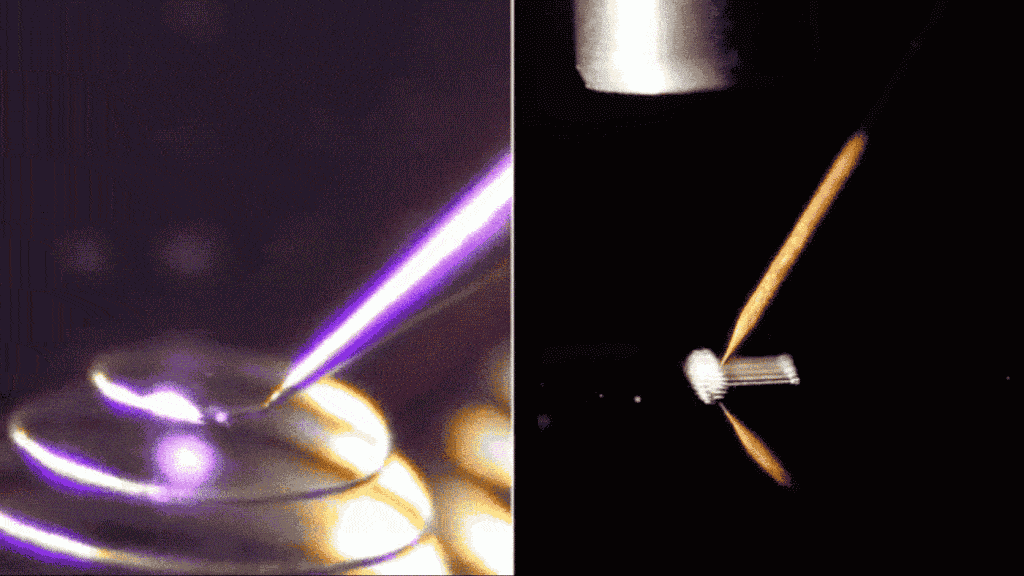
Harvard researchers have demonstrated an all new 3-D printing technique that creates metals objects with complex shapes right in mid-air. This is fundamentally different from the approach of traditional 3-D printers which ooze polymer material layer by layer. The new fabrication technique could prove very useful in the production of flexible, wearable electronics, sensors, antennas, and biomedical devices.
To make objects in mid-air, the Harvard printer injects silver nanoparticles through the nozzle, then immediately fires a focused laser beam onto the material to harden it. The nozzle can move along x, y, and z axes, but also in a combination with a rotary print stage. This high degree of freedom means complex metal shapes can be printed, previously difficult if not impossible to make with traditional techniques.
As you can see in the demo video below, the researchers made anything from coils to a butterfly made of silver wires narrower than a hair’s width.
This was a tricky job, though. The main challenge was syncing the nozzle “ink” and the laser, the researchers report in Proceedings of the National Academy of Sciences.
“If the laser gets too close to the nozzle during printing, heat is conducted upstream, which clogs the nozzle with solidified ink,” said Wyss Institute Postdoctoral Fellow Mark Skylar-Scott. “To address this, we devised a heat transfer model to account for temperature distribution along a given silver-wire pattern, allowing us to modulate the printing speed and distance between the nozzle and laser to elegantly control the laser annealing process ‘on the fly.’”
“This sophisticated use of laser technology to enhance 3-D printing capabilities not only inspires new kinds of products, it moves the frontier of solid free-form fabrication into an exciting new realm, demonstrating once again that previously accepted design limitations can be overcome by innovation,” said Wyss Institute Director Donald Ingber, who is also the Judah Folkman Professor of Vascular Biology at Harvard Medical School and the Vascular Biology Program at Boston Children’s Hospital, as well as professor of bioengineering at SEAS.






